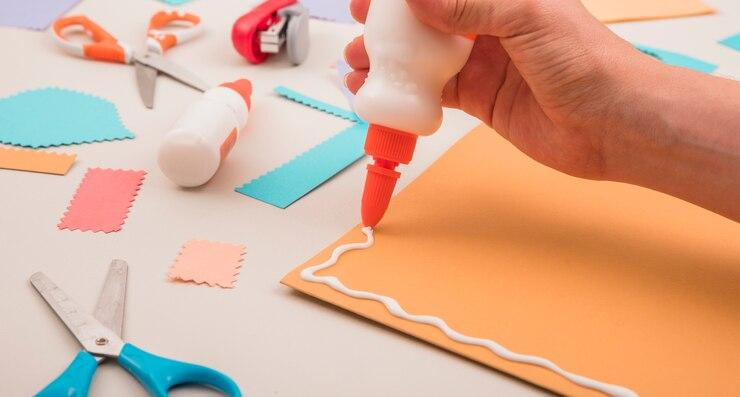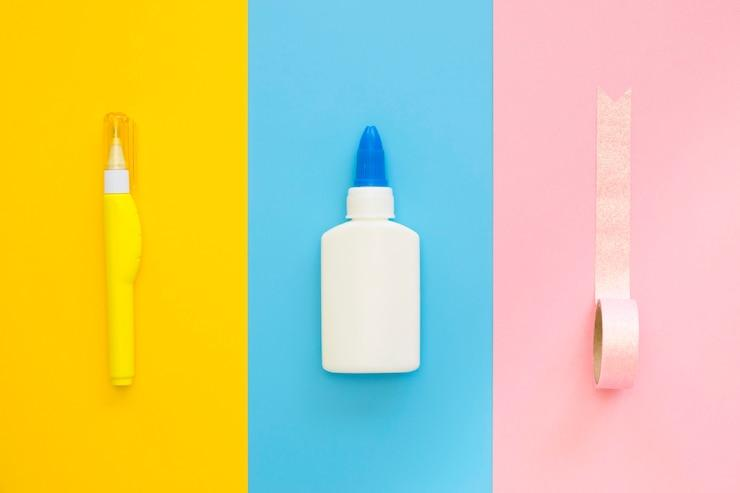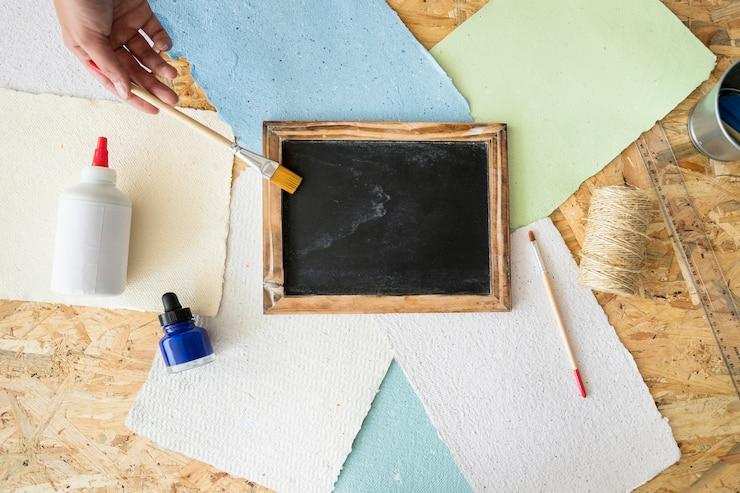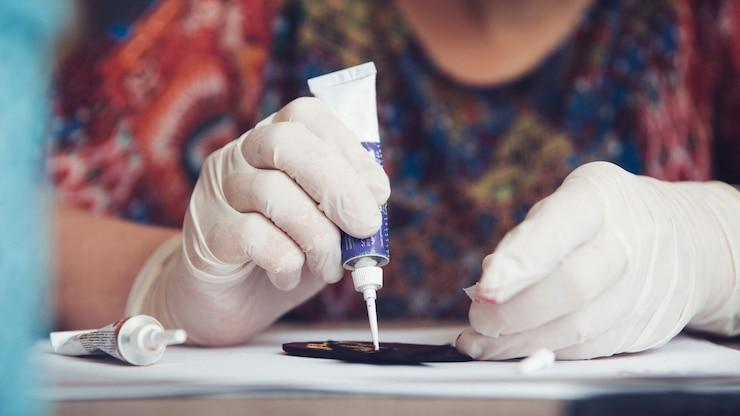Dried glue on hands, spills on the table, and destroyed crafts may be annoying when glue does not work as expected. Moreover, finding the right glue to suit all your creative works is not always easy. Some glues do not adhere well, and others are sticky or toxic to children.
However, PVA glue changes that for you. It is safe and perfect for school, arts, crafts, and other home improvement projects. Furthermore, adhesives had a total global market value of approximately $43.75 billion in 2020, with PVA glue being used in schools because it’s that reliable.
Therefore, what makes PVA glue so unique and enjoyable to use? In this guide, we’ll explain why it sticks well to anything and how it opens up a world of creativity. Thus, you can use this glue for art and science fair projects because this glue enables you to discover, learn, and create confidently.
What is PVA Glue?
PVA glue is a common adhesive used in homes, schools, and workshops. It can fix paper, wood, fabric, and other materials without much effort.
1. Chemical Composition
PVA glue is primarily derived from polyvinyl acetate, a plastic material. This polymer is synthesized from vinyl acetate monomers.
These are the main components:
- Polyvinyl acetate: The leading bonding agent.
- Water: It is used to thin the glue.
- Preservatives: These prevent the growth of mold and bacteria in the glue.
- Stabilizers: Prevent the glue from degrading over time.
- Plasticizers: These are added to the glue to make it flexible when dried.
These components make the glue sticky, smooth, and safe for use. When the water evaporates, the polyvinyl acetate hardens, forming a transparent film that binds the materials together.

2. Properties
PVA glue has several characteristics that make it ideal for many applications.
Strong Bonding Power
PVA glue is a reliable adhesive that ensures that items stick together tightly. It is effective when it dries and becomes rigid, especially on paper, wood, and fabric. You do not have to worry about your pieces coming off after gluing them together.
Dries Clear
PVA glue is white when applied but dries clear. That means you do not have to worry about ugly glue marks appearing on your work. Hence, you can make neat, clean, and professional projects.
Water-Soluble Before Drying
PVA glue can be washed with water before it dries, removing it easily. You can also clean your hands or brushes quickly with water before the glue hardens.
Common Uses of PVA Glue
PVA glue is one of the most versatile glues you can have at home, school, or the workplace. It can be used for various applications, including:
1. Arts and Crafts
If you are an artist, this glue is your companion. It can stick paper, cardboard, glitter, and fabric. It is also used to construct models, posters, collages, and decorations. It can also be combined with paint or other materials to achieve various textures.

2. Woodworking
PVA glue is also very useful in joining pieces of wood together. You can use it to repair furniture or construct small shelves. When you apply it to wood, it penetrates and forms a good grip. That is why many woodworkers prefer it.
Furthermore, it does not require any special tools to use it. It can be spread by a simple brush or even your fingers. You can wash off the excess glue with water before it dries up. When it dries, the glue becomes very strong. It keeps the wooden parts intact even with daily use.
3. Bookbinding
You will like this glue if you read or create notebooks. It is flexible enough to bend but rigid enough to hold the book's pages together, allowing it to bind books, notebooks, or journals.
Fun Experiments with PVA Glue
You can make your experiments fun and exciting by using glue in the following ways:

1. Making Slime
You can have fun making slime using PVA glue. You only require glue, water, and a slime activator, such as borax or baking soda with contact lens solution. Add them together, and the glue becomes stretchy.
You can add food coloring or glitter for more fun, and the slime will become softer. It can be stretched, bounced, or squished. You can have fun using it and discovering how the quantity of the ingredients affects the texture.
2. Creating Putty
You can also make putty thicker than slime and mold it into various forms. To make the mixture, you will need glue, cornstarch, and a little oil. Mix them until they feel like dough. Putty can be shaped into forms, such as fun models or toys.
3. Homemade Plastic
You can even try making plastic with PVA glue. Add vinegar and cornstarch to the glue and heat the mixture slightly. This produces a moldable plastic-like material.
It can be molded into charms or small tools. When it cools and solidifies, it becomes rigid. It is an entertaining way to learn about the transformations of materials when combined or subjected to heat.

Conclusion
Now you know that PVA glue is not only used in school. You have learned about its composition and uses and how to apply it. It is used in arts and crafts, fixing, construction, or for fun science experiments. It’s not a must that you have special skills to have fun with it. All you need is a little creativity and the correct procedure. PVA glue thus enhances your projects, whether you are making something for school or just having fun.